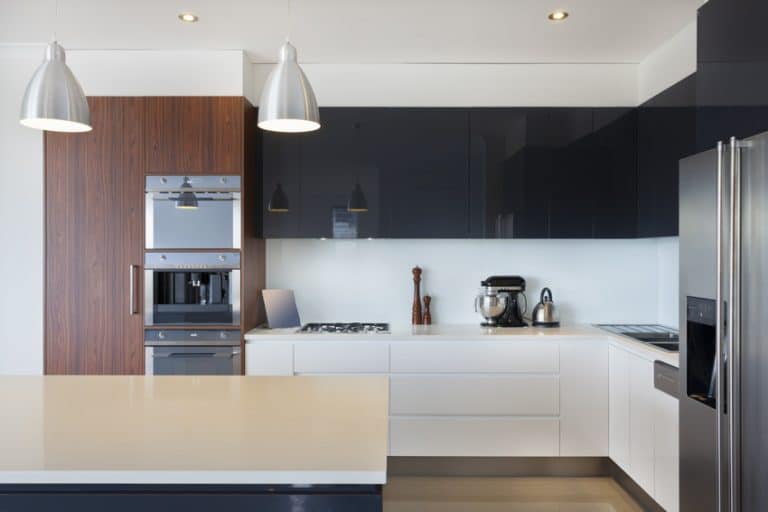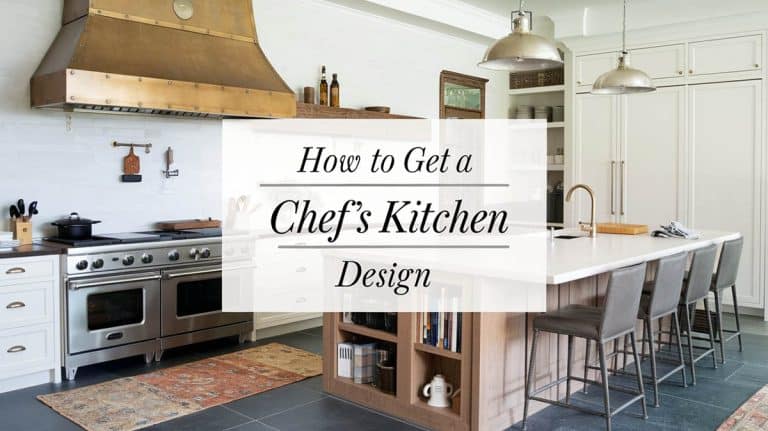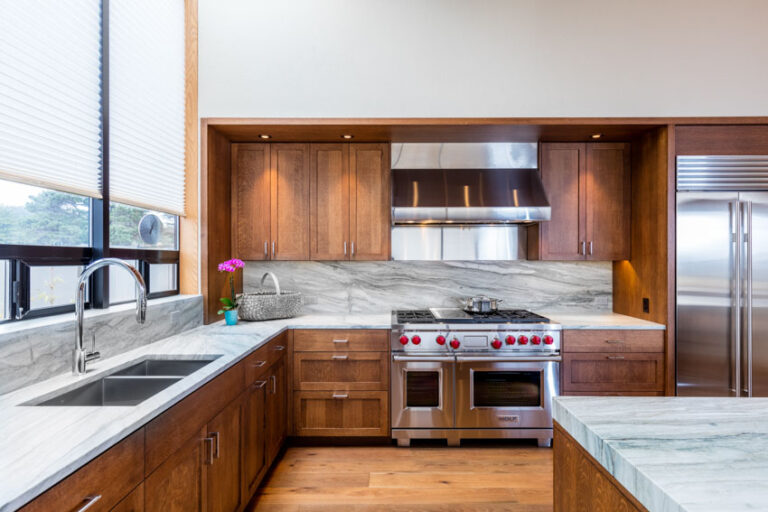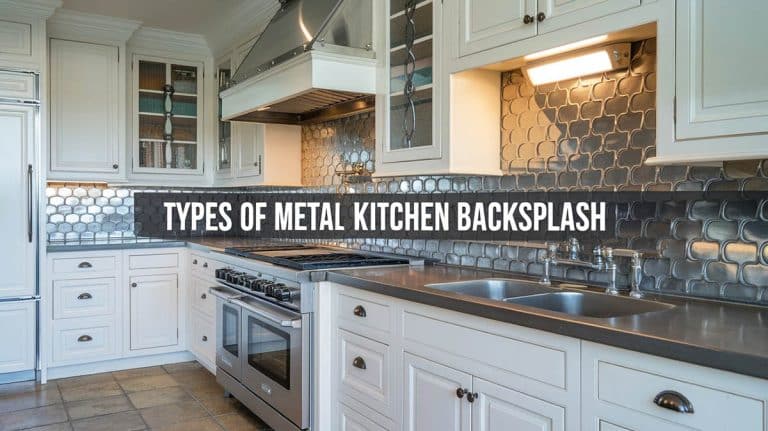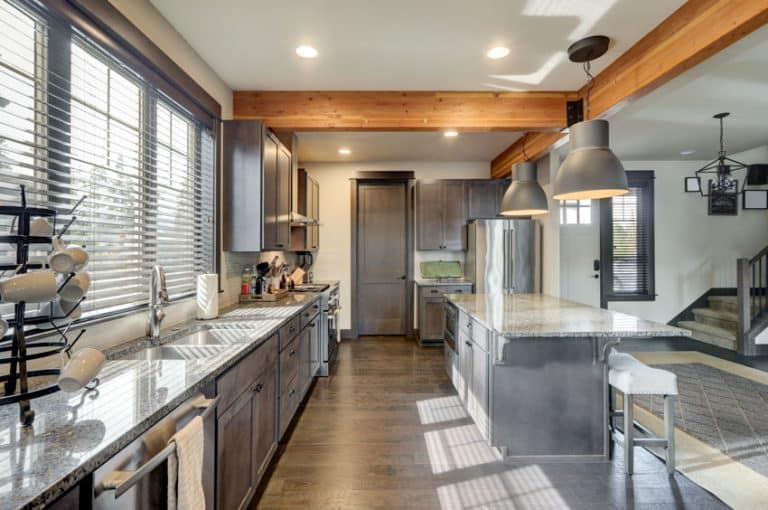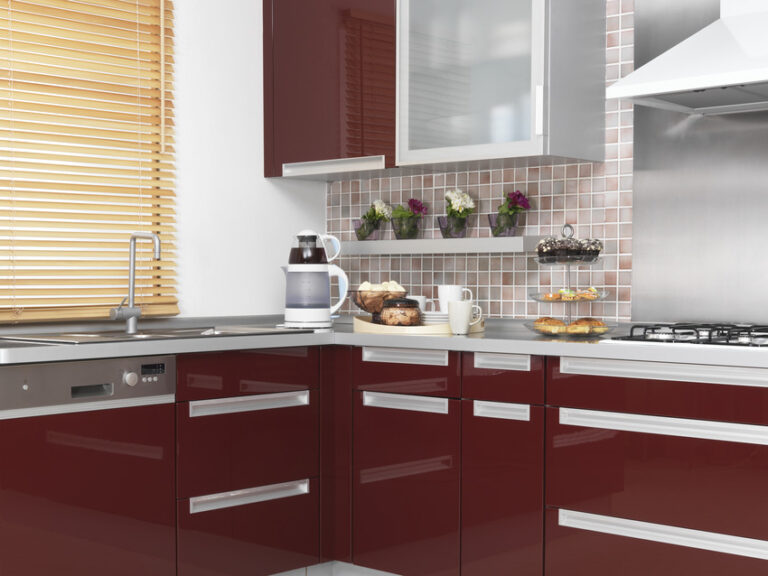How To Create A Beautiful Cottage Kitchen: Designer Ideas
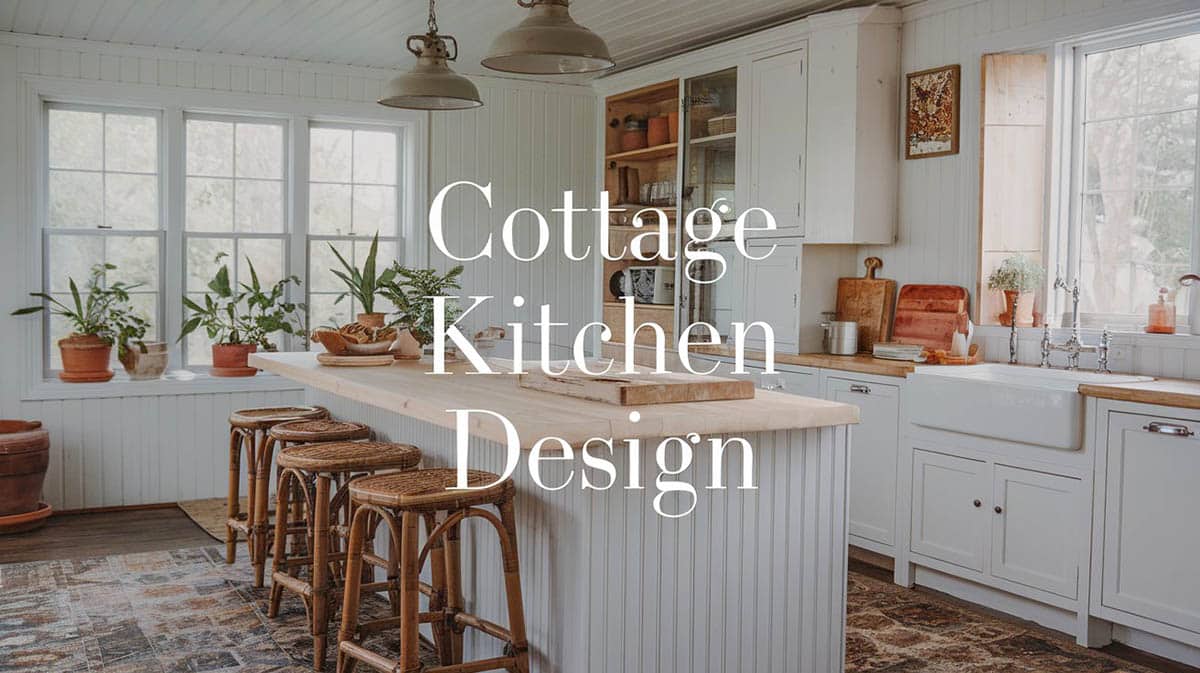
Cottage kitchen designs are known for being cozy, with a down-to-earth, carefree style that’s inviting and attractive. The cottage style is inspired by aesthetics from a simpler time, with soft colors and an emphasis on charm and functionality. Below, you’ll find a variety of cottage kitchen ideas with cabinetry, flooring, lighting, fixtures, and appliances that represent this beautiful decorating style.
Cottage Kitchen Designs
Cottage kitchens possess the timeless look of classic kitchens but have a more casual and laid-back feel. It mostly seeks to achieve a light and airy feel to a space and, therefore, uses mostly light colors to achieve a light and airy look. There are many typical elements found in a cottage kitchen (which do not necessarily have to all be present), as well as various color and material combinations you can go for.
Muted color theme – A soft, muted color theme is often used for cottage designs to create a light, inviting space. Color palettes are often made up of whites, pale yellows, pastels, and light khaki. It’s not uncommon to see a two-tone color theme, with the base cabinetry being one color and the island being another.
Beadboard cabinets – One of the most telling elements of cottage-style kitchens would be beadboard cabinets, which are basically grooved vertical paneling that help add more dimension to the surface.
White painted cabinets – Aside from this, cabinets are often painted, typically in white, but other subdued colors are also acceptable, or a combination of both. To match the vintage look of the cabinets, vintage style pulls, and hardware is also a must, as well as apron-front sinks and matching fixtures.
Wood flooring – May it be hardwood, engineered, or vinyl, it also completes the cottage-style look and adds more warmth and a vintage appeal to the space.
Farmhouse sink – A beautiful large basin farmhouse sink can bring just a touch of country style into your home. Also known as apron front sinks, these large sinks offer plenty of space for cleaning up and have become more popular over the last several years.
Vintage lighting – Light fixtures such as pendant lights with brushed nickel, an antique patina, or frosted glass can give your space a vintage-inspired feel. Many cottage kitchens use vintage-style light fixtures to bring a touch of retro style to the room.
Designer Tips to Elevate Your Cottage Style Kitchen
For an authentic cottage feel, start by layering textures. Pair smooth painted cabinetry with rough‑sawn shelving, woven rush seats, or a butcher‑block island top. The tactile contrast keeps the room from feeling flat and amplifies that “collected over time” charm.
Mix open and closed storage to get he right balance between what’s on display and practicality. Reserve the upper shelves for everyday use items, glass canisters, or a row of vintage enamelware, then tuck less‑sightly items behind cabinet doors below. Painting inside the open shelves with a contrasting pastel is a subtle way to add depth and color without crowding the space.
Pay close attention to hardware and small metal accents. Matte pewter latches, aged‑brass bin pulls, or iron cup handles instantly telegraph cottage character. If you prefer a cohesive look, carry the same finish onto light‑switch plates, window latches, and bar‑stool footrests.
When choosing countertops, consider materials that age gracefully. Soapstone, honed marble, or sealed butcher block all develop a gentle patina that complements beadboard and painted wood. For an easy uplift, run a deep, kiln‑fired ceramic tile backsplash right to the underside of the upper cabinets; the reflective surface bounces light around and echoes classic cottage scullery.
In a cottage kitchen, lighting should feel warm and layered. Supplement vintage pendants with discreet under‑cabinet LED strips on a dimmer. This keeps prep areas bright while allowing you to dial the ambience down during meals or late‑night tea.
Finally, embrace subtle imperfections—a slightly distressed paint edge, an unfussy linen Roman shade, or a mismatched set of hand‑thrown mugs. These quirks soften the overall look, making the kitchen feel lived‑in and genuinely welcoming rather than staged.
By thoughtfully combining these elements, you’ll enrich the cozy, carefree essence of your cottage kitchen while ensuring it remains functional for everyday cooking and gathering.
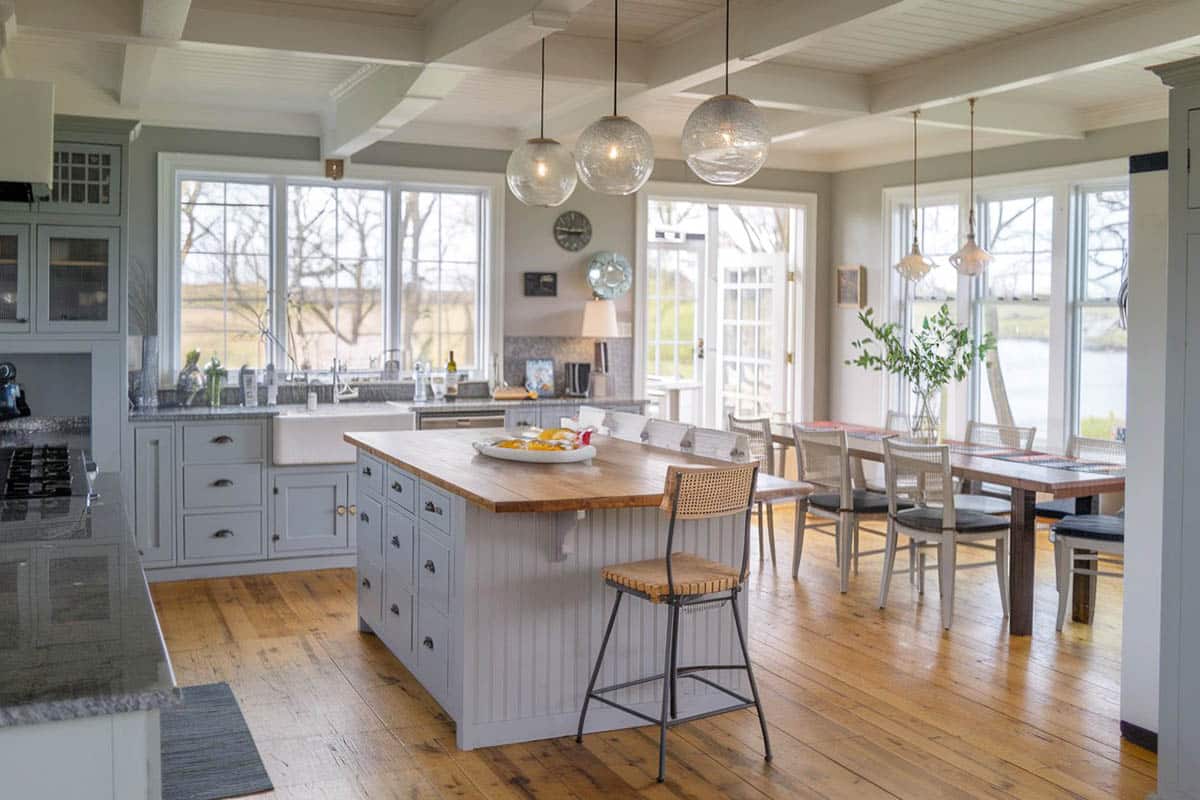
This modular kitchen uses paneled cabinetry painted in a neutral gray tone, achieving a rustic look paired with the pale walnut flooring. It has an island in the middle with a beadboard base, functioning mostly as a dining area and additional preparation area. Pull-handle hardware is often used for cottage kitchens and is used here to match the look of the round pendant lights and antique lamps. The rush seats of the bar stools also help emphasize the rustic feel of the space.
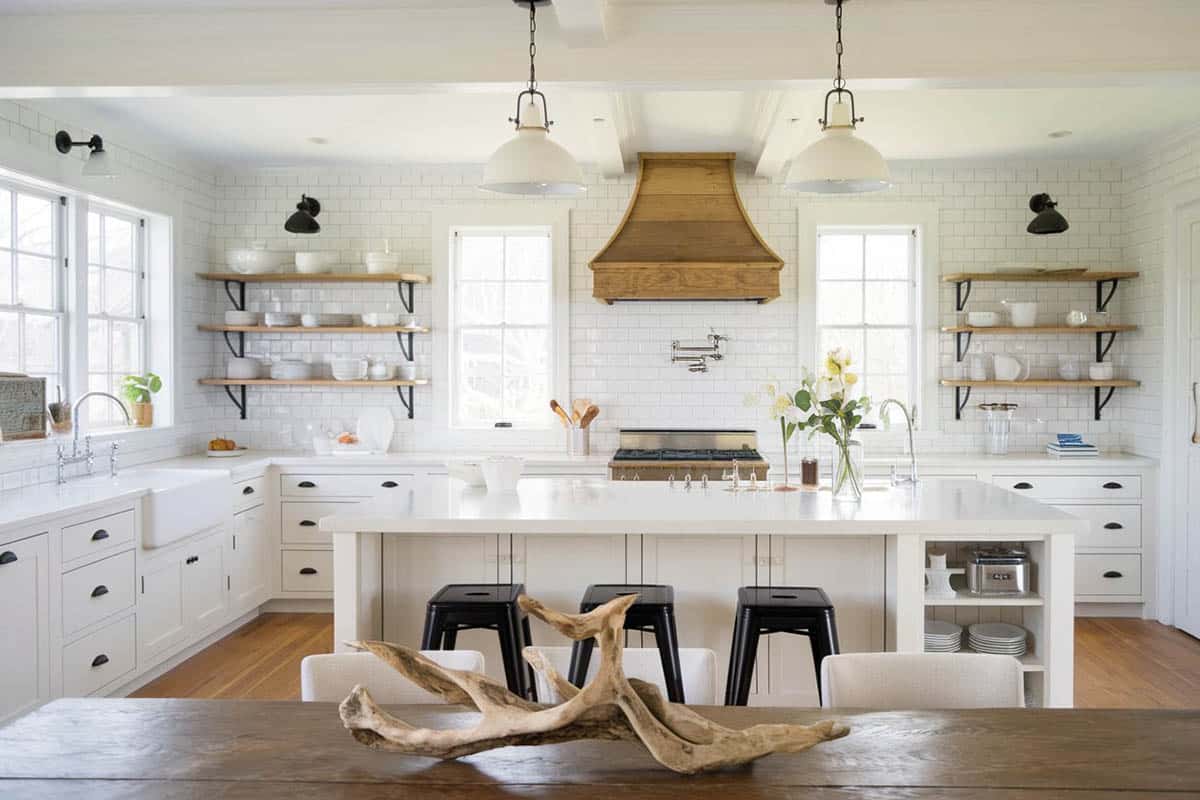
Combining elements of modern style with cottage aesthetics, this space achieves both the simple and sleek look of modern kitchens and the classic charm of cottage kitchens. It uses white-painted cabinets with beadboard paneling, topped with white marble, for a classic feel. It also incorporates open shelving for the overhead in combination with closed cabinets. White subway tiles were used on the backsplash, which nicely offsets the maple wood range hood cover and cantilever shelves.
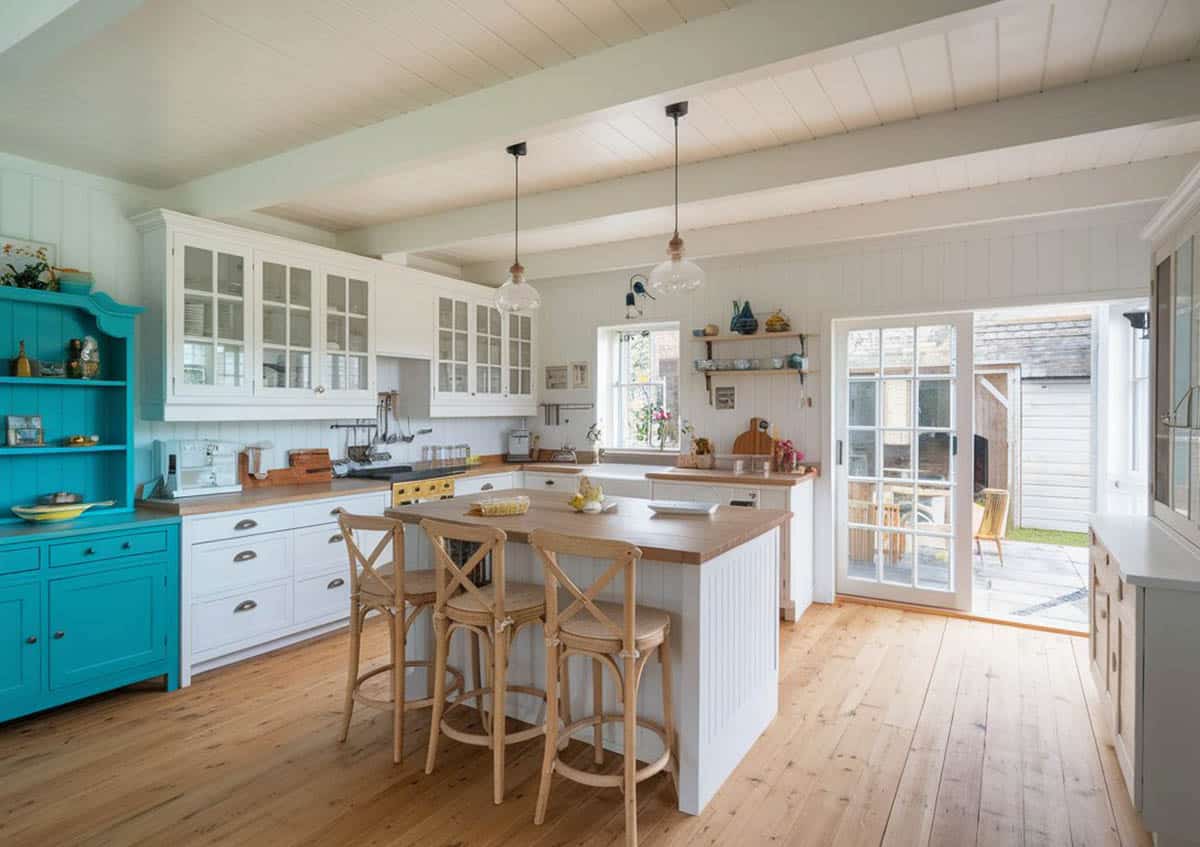
This cottage-style kitchen is often used in modern interior style to add a bit of vintage chic feel to the space. Reclaimed rustic fruitwood flooring sets a nice rustic element for this design and contrasts with the clean white paint finish of the cabinets. While the main cabinets use simple paneled faces, the front of the island has beadboard paneling complemented by rustic wooden barstools. It also features glass-door overhead cabinets in combination with closed cabinets, a solid Teak wood countertop, an apron-front sink, white subway tiles for the backsplash, and vintage-style pulls & lamps. Also noticeable would be the teal-painted free-standing display cabinet, which is common in cottage-style kitchens.

